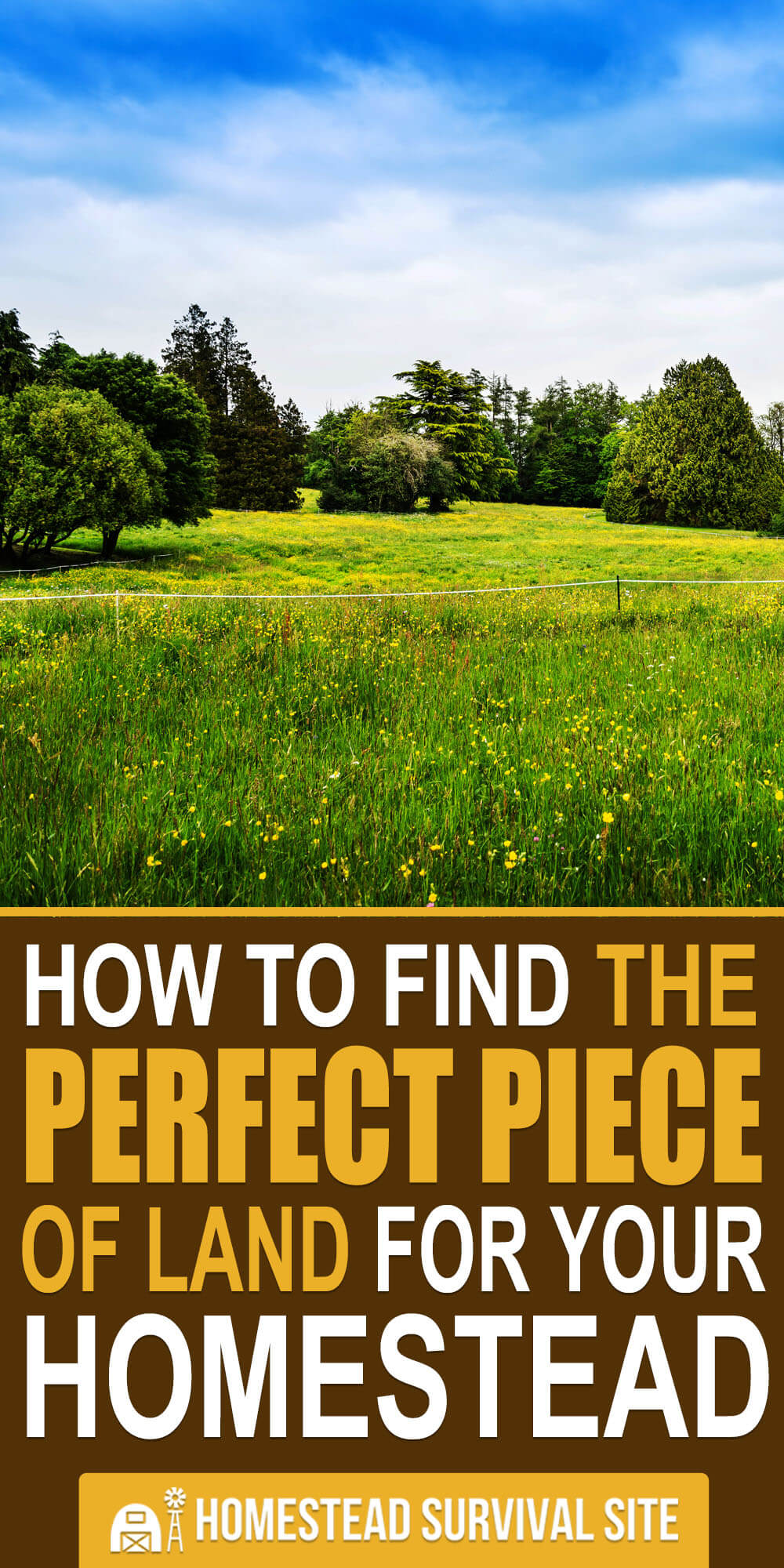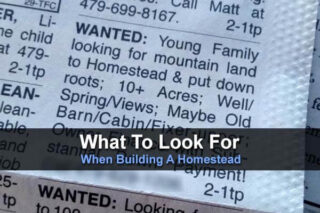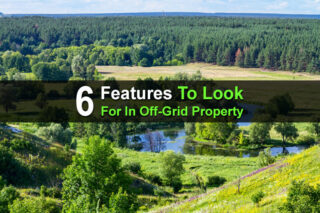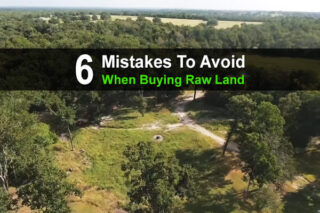Estimated reading time: 9 minutes
Realizing a homesteading dream begins with the purchase of the right piece of land. Browsing real estate listings can be overwhelming, even when merely searching for a traditional home. When you are searching for a survival homestead, so much more must be considered, and few real estate agents are equipped with the skills to suit your needs.
Arming yourself with a detailed checklist of natural attributes the land must contain can help prevent your homesteading dream from turning into a very expensive nightmare.
Want to save this post for later? Click Here to Pin It on Pinterest!
Before making an appointment to see a piece of property, it is vital that you speak with your bank to make sure you are loan ready, know how much the financial institution is willing to lend, and get a pre-approval letter in hand before negotiating price with any seller.
There are a plethora of loan options outside of a traditional home purchase mortgage that can help make you a homesteader, but that is a topic for another article.
Homestead Real Estate Professionals
There are several prepper retreat and homestead specific real estate brokerages, but unfortunately those superb agents tend to be clustered in only a few specific regions of the country.
If you cannot locate a homesteading or survival real estate professional in your region, look for an agent who has extensive experience both listing and selling agricultural land.
A beautiful piece of farmland does not necessarily translate into a perfect piece of land for a survival homestead, but at least you will be working with someone who is actually familiar with getting their boots dirty, land loan programs, and the type of land necessary to grow food and support livestock.
You will surely be shown many bucolic land parcels where you would love to live. But until you evaluate it using the criteria below, the ability to actually live off the land and defend it during an SHTF situation will remain one huge and massively important unknown.
Top 6 Things You Need To Look For When Buying Homesteading Land
1. Water
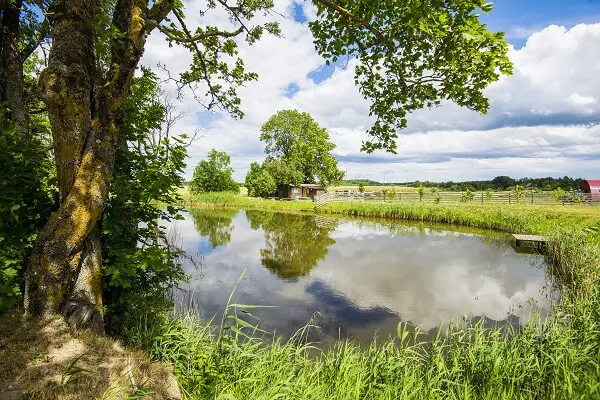
If the land does not have at least one natural water source that doesn't run dry seasonally, it should immediately be removed from the list of potential homesteads.
A natural spring, pond, creek, lake or river frontage are ideal sustainable water sources. If the potential homesteading land hits all the other marks except water, you could consider leaving it on the list of potential properties if the terrain attributes could support one to three man-made ponds – depending upon the total number of acres.
The age of any underground well on the potential homestead property is also an important piece of information to know before making an offer on a piece of property. If no wells exist, expect to spend around $15,000 having one drilled. If the homestead is going to be off the grid or able to function in such a way during an SHTF situation, being able to manually retrieve water is also an avenue that needs exploring.
2. Acreage
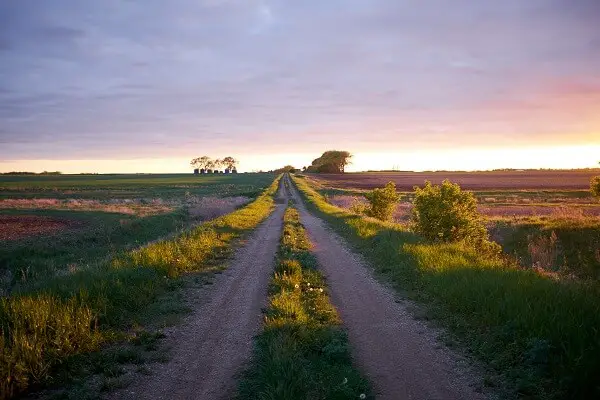
We lucked into a bargain basement property listing on a fixer-upper farm that could be turned into a sustainable survival retreat. It included far more acres than we had initially planned to purchase. Because the property was 50 percent wooded, the additional acres provided ample firewood, did not need to be maintained like pasture, offered additional income through the select cutting of hardwoods, and was already fenced.
Had this scenario been different, it would have been too much land for our tribe to work and protect while everyone but myself maintained a full-time job off the property. Never bite off more than you can chew, regardless of a bargain price.
Purchasing a property that is more than you could reasonably work and protect, and then selling off a portion later could be an option. But, make certain the amount of natural resources on the portion you are keeping can sustain you during a long-term disaster.
I have known accomplished survival homesteaders who can grow or raise enough food to feed a family of four on less than three acres. They had ample skills, superb natural resources, and used every single inch of space to its ultimate advantage.
The ideal amount of land needed for a survival homestead depends on budget, skills, family size, work availability, type of livestock being raised, and the natural attributes required to have a sustainable lifestyle.
A homestead of at least five acres is highly recommended if raising your own groceries in addition to growing them. Small livestock like chickens, rabbits, and small stature goat breeds can live on a homestead of that size.
The average size homestead is about 10 acres, but survival homesteaders tend to purchase between 15 to 20 acres, when affordable.
3. Gardening
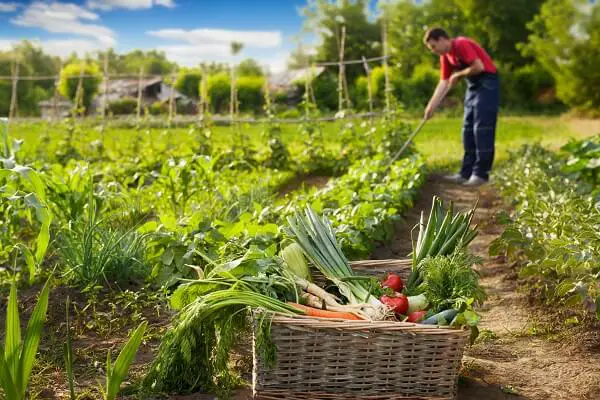
A detailed gardening plan should be developed before you start browsing homestead land for sale.
Make sure you have answers to these questions when starting your survival homesteading land search:
- How big of a garden is needed to feed my tribe and put up enough food to create a 3-month stockpile?
- Will I be growing in a traditional garden plot or using that method of grocery cultivation along with other manners of turning seeds into food?
- Will food be grown in a raised bed?
- Will crops also be grown in containers?
- Is there room to build a greenhouse – and time to work it alongside other homesteading chores?
- Will I be using the available space for vertical gardening?
- If I need to conserve on space or grow groceries inside for OPSEC reasons, can it be done successfully in the house that exists or will it be built on the homestead?
You should also consider the location of gardening areas in conjunction with their visibility from both the road and neighbors. During a long-term disaster situation, a robust garden growing in plain view (heck, even a lackluster garden) will be a prime target not just for the marauding hordes, but the nice couple a few doors down with a starving child.
Growing in food guilds along the edge of a wooded area, will help keep your growing herbs, crops, roots, and medicinal plants camouflaged.
Check out how my friend and survival homesteading mentor, Rick Austin, has mastered the food forest concept in the video below.
I cannot recommend highly enough getting a soil sample of the gardening areas before signing a purchase contract. What exists under the ground is far more important than how beautiful and vibrantly green the area looks when strolling through it on a property tour.
4. Livestock
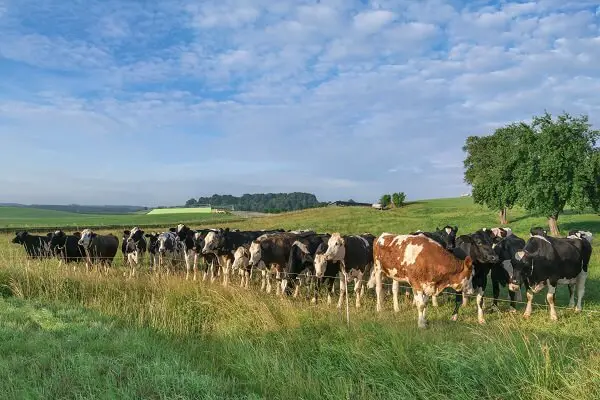
The type of livestock that can be supported on a homestead will depend on not only the amount of land, but the type of land. A typical real estate agent can point out a big beautiful field and say, “Sure, you can keep cows in there.” But all ground is not created equal.
It can take years to develop a healthy pasture and hayfield, and only a few years of neglect to reduce the quality to a point where it cannot support any type of livestock even during warm weather months.
Do not let the spacious appearance of a quality hayfield fool you into thinking it can support more livestock than it truly can. A spring like the one we all just lived through in the Midwest, with record rainfall and flooding, can wipe out hayfields and pastures for an entire season in a surprisingly short amount of time.
Baling your own hay is a lot of hard work and requires expensive equipment, even if you purchase quality used machinery. Both the time and the money needed to bale enough hay to support the livestock must be a known quantity and factored into any survival homestead offer.
The animals will require both a shelter and water. Do not rely on a healthy underground well to supply all of your water needs. Space, location, expense, and time to build are also major factors when comparing potential homestead property listings.
5. Property Rights
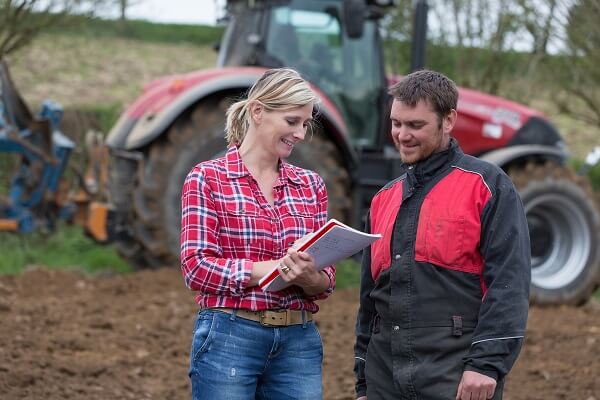
Do both the water and mineral rights belong to the buyer of the property? Find this out before making an offer, never assume. Get a copy of the deed to review any easements, restrictions, and rights of way that could inhibit your full use of the land.
A real estate agent should have a copy of the deed in the property file. If this is not the case or it is a private sale, the county courthouse will have a public record of the deed and typically only charges a few dollars to get a copy.
Deed restrictions could place limits on the type or number of livestock that can be raised on the property or any for-profit activities conducted on the land.
6. OPSEC
If you are a survival homesteader, you do not want to purchase any piece of land, no matter how seemingly perfect, if it is located within 60 miles of a major city or 30 miles from a highway.
A property with minimal road frontage and a secluded home is ideal. Our home is located half a mile from the start of our private dirt farm road. It is completely obscured from view, as is our barn, a pond, natural spring, hayfield, and a large pasture area.
The terrain on and around your homestead should be as unwelcoming as possible. There is only one way into our homestead via vehicle or ATV. A horse could get close, but not all the way onto our property from the back or one side.
Look for naturally covert places that could be used for an LP/OP during a long-term disaster.
These foundational property attributes should serve you well as your base guide to selecting a survival homestead property. For more information on homestead property, check out our other articles:
- How Much Land Does It Take To Be Completely Self-Sufficient?
- 1 Way Poor People Can Buy Land With No Money
- How To Buy Your Dream Homestead: 55 Financial Tips
Like this post? Don't Forget to Pin It on Pinterest!



